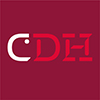Caricatures of the Franco-Prussian War and the Paris Commune (1870-71)
La plupart des caricatures politiques parues pendant la période qui nous occupe furent publiées tirées à part, sur feuilles volantes, que l'on accrochait à la devanture des kiosques et des marchands de journaux. Ces publications éphémères achetées par ceux-ci, déchirées par ceux-là, quand elles n'étaient pas détruites par la pluie et le mauvais temps, donnent bien la note véritable du dévergondage de la rue pendant cette époque troublée" Jean Berleux [Maurice Quentin-Bauchart], La caricature politique en France pendant la guerre, le siège de Paris et la commune (1870 - 1871), Paris, 1890

Cambridge University Library holds a world-class collection of six large bound volumes of caricatures from the Franco-Prussian War and the Paris Commune—(mostly) French and (some) German illustrated plates entitled Collection de caricatures et de charges pour servir à l'histoire de la guerre et de la révolution de 1870-1871 (the term caricature derives from the Italian caricare — to charge or load). The caricatures, most of them coloured, provide key visual material on the war and the ensuing political turmoil in France. Produced in their thousands, they make fun of politicians and public figures of the time, soldiers and civilian populations during the war, the siege of Paris by the Germans, and the civil war that followed. They were assembled in Paris shortly after the events, then brought to London, where several sets were compiled in large volumes and sold or donated to several museums and libraries from the 1870s and into the 1880s by booksellers Dulau and Co and their assistant, Frederick Justen. The Cambridge collection of Franco-Prussian caricatures was donated by Justen in 1906, along with other (illustrated) satirical journals and historical material.
The caricatures reflected almost immediately the experience of war and siege. They captured national and international rivalries (between different social and political groups within France, and in France’s relationship to the newly omnipotent Germany), just a matter of days after key events in the war against the Germans and the civil war of the Commune. They add a new dimension to our understanding of the development of national identities, the creation of modern popular culture, and the use of image as a medium at a key moment in French (and German) history.
The caricatures and their assumed bias offer diametrically-opposed perspectives on political actions and social relations in Paris during the Franco-Prussian and civil wars. The political biases expressed in the caricatures appear in the French depictions of Wilhelm I, Bismarck and the German army. The caricatures expose the internal tensions depicted in the conflicts between Bonapartists (from the Second Empire), monarchists (nostalgic for pre-1848, and indeed pre-1789 kingship) and republicans, themselves divided between the radical Communards of central Paris, and the compromise “ conservative” Third Republic (camped out at Versailles and determined not to lose mainstream support as had the first two short-lived republics in 1792-1804 and 1848-51).
Visit the virtual exhibition of the Cambridge Franco-Prussian caricatures. More information on the Cambridge Franco-Prussian caricatures can be found on the European languages across borders blog and in this special feature .


